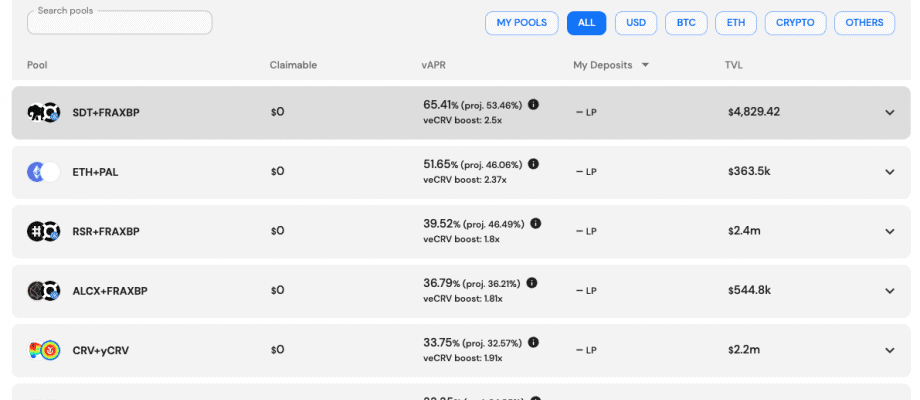Gone are the days of food token farming with triple-digit returns and the hype about seemingly ever-rising governance tokens. But the DeFi sector does not seem to be completely empty yet. Although it may seem so when looking at the yields of classic protocols such as AAVE, Compound and Co.
If you know where to look, it’s easy to see that today’s risk is concentrated in a few platforms, rather than across the industry. The protocols are becoming more and more complex, which is why they are hardly suitable for crypto beginners. Nevertheless, we venture on a tour into the DeFi underground.
This article does not constitute investment advice and is for informational purposes only. For investors, the following therefore applies: enter at your own risk!
Curve, Convex and (C)concentration
The linchpin of the still high APYs (Annual Percentage Yield) is curve finance. In addition to stablecoins, there are now some liquidity pools for more exotic token pairs on the decentralized exchange. In an interaction with so-called boosters, such as Convex Finance or the concentratoryields could climb into double digits.
Investors could put the respective token pair (or trio) in a liquidity pool on Curve and receive LP tokens in return. These can be created on Convex or in the Concentrator. The complex smart contracts of the platforms can “boost” the rewards for investors. The protocol reinvests earned rewards and automates compound interest effects.
The variable interest rates change daily, depending on the activity in the pools. Payments are often made in CRV, the native token of the Curve protocol or a modification of it. With various Ethereum liquidity pairs, between eight and more than 25 percent APY could be achieved. Bitcoin pairs yield up to 30 percent APY. For some stablecoin pairs, the APY is currently exceeding this level.

Over the course of this year, with the onset of real yield narratives in the DeFi sector, the demand for earnings in stablecoins or Ethereum has increased. Here, too, protocols have emerged that carry double-digit APYs for ETH deposits. underneath Ribbon Financewhich promises more than 15 percent APY using options on the ETH staking derivative stETH.
The protocol uses user deposits to purchase call options on Ethereum. An algorithm calculates the optimal selling price and pays out any profits plus accumulated staking rewards to users. If the algorithm is mostly successful in doing this, it could result in average positive returns that could grow into double digits. Still, losses are inevitable.
risk and reward
Looking at the performance of the options strategy on Ribbon Finance, it is easy to see that the interest rates in the logs are subject to strong fluctuations. Sometimes the APYs fall below those for simple Ethereum staking. In terms of opportunity costs, investors must therefore decide whether the risk is worth it. Mainly because staking could yield a much safer three to six percent return.

In addition, the algorithm in this case is not always successful in terms of the optimal selling price of the options. On losing days, an average of eight percent misery must therefore be expected. This is the case, for example, when the crypto market fluctuates more than expected.
The experimental nature of these DeFi protocols also means that flaws in the smart contracts and economic design are often discovered too late or exploited by malicious actors. A risk that should be factored into your own profit calculation alongside the usual losses of the strategy.
As for the CRV rewards, it remains questionable what the real return will be if the token migrates south with the rest of the market in the short to medium term. In other words: what use are 25 percent APY Rewards in CRV if CRV subsequently collapses by five to 20 percent?
If that doesn’t deter you, you should still follow the well-established principle: only invest what you are willing to lose.
Disclaimer: All content presented in this article is for informational purposes only and does not constitute a buy or sell recommendation or investment advice.
Do you want to buy cryptocurrencies?
Trade the most popular cryptocurrencies like Bitcoin and Ethereum with leverage on Plus500, the leading CFD trading platform (77 percent of retail accounts lose money with the provider).
The latest issues of BTC-ECHO Magazine
You might also be interested in this
